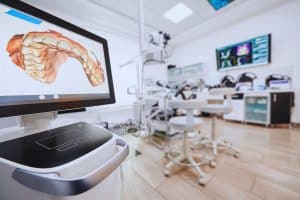As a seasoned dental CPA dedicated to steering your practice toward prosperity, I’m here to demystify a crucial financial metric: EBITDA (Earnings Before Interest, Taxes, Depreciation, and Amortization). Understanding this metric is pivotal for dentists aiming to enhance their economic prowess, and I’ll explain why.
Recognizing the worth of a dental practice isn’t just crucial for those eyeing a transition; it’s equally vital for dentists aiming to build retirement wealth. Every dental practice owner needs a grasp of the genuine earnings linked to what often stands as their primary investment: their practice. If this investment isn’t performing optimally, resolving underlying issues becomes the most effective strategy for boosting wealth for a private practice owner.
But What Exactly Does EBITDA Mean?
EBITDA represents a measure of a company’s operating performance, indicating its profitability before considering certain expenses. It excludes non-operating expenses like interest, taxes, depreciation, and amortization. Often regarded as a proxy for a company’s cash flow, this metric enables an apples-to-apples comparison between different companies or sectors, allowing for a more precise assessment of operational performance.
It serves as a composite market/income-based valuation method used in investment circles. In recent times, dentistry has lured the attention of financial investors, private equity funds, and corporate consolidations seeking income-generating investments surpassing traditional debt and equity markets. EBITDA stands as the primary gauge these investors use to evaluate the market value of dental practices.
To illustrate the significance of EBITDA in dental practice management, consider the following hypothetical scenario:
Imagine two dental practices, Practice A and Practice B, both generating similar revenues of $1,000,000 annually. However, Practice A boasts an EBITDA of $300,000, while Practice B’s EBITDA is $200,000.
Despite having equal revenues, the higher EBITDA of Practice A suggests better operational efficiency and profitability compared to Practice B. This could result from various factors such as better cost management, higher patient retention, or more efficient resource utilization.
A negative EBITDA indicates that the practice owner is pocketing less income from owning the practice compared to being an associate without shouldering the associated risks or investment of time, money, and energy. Conversely, positive EBITDA represents free cash flow—a valuable asset with significant worth to the owner, investors, and other dentists.
Relevance to Dental Practice Financial Management:
1. Performance Evaluation:
It provides a clear snapshot of a dental practice’s operational efficiency. Focusing solely on core operations allows the practice to profit from its main activities – treating patients and providing dental services.
2. Comparative Analysis:
Comparing EBITDA across different dental practices or within the industry helps in benchmarking performance. It aids in identifying strengths, weaknesses, and areas for improvement relative to competitors or industry standards.
3. Facilitating Business Valuation:
EBITDA serves as a fundamental metric in determining the value of a dental practice. When considering a sale, acquisition, or partnership, potential buyers or investors often use EBITDA as a basis for valuation calculations.
4. Decision-Making Tool:
Informed decision-making within a dental practice is fortified by a clear understanding of EBITDA. Whether it’s expanding the practice, investing in new equipment, or hiring additional staff, EBITDA insights guide strategic financial decisions.
These are the reasons this acronym is so essential for dentists and dental CPAs. It forms the financial backbone that fuels retirement contributions, asset acquisitions, and genuine wealth accumulation. By evaluating EBITDA alone or with a financial expert, you gain a clearer understanding not just of your practice’s value but also the means to tackle issues potentially hampering EBITDA’s growth.
If you’ve read this post and want to learn more about this metric, you can always contact an expert! Don’t miss out on maximizing your practice’s potential—reach out to our team today for a comprehensive assessment and expert guidance towards sustainable growth. Set up your consultation!




